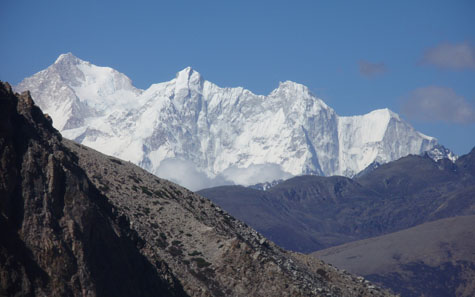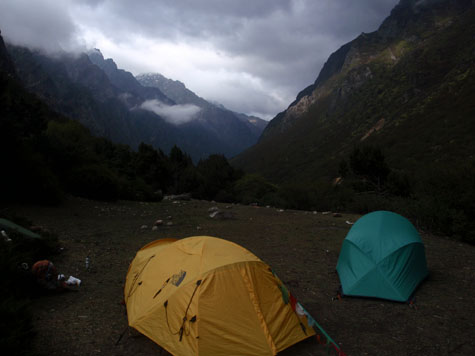| Extensional Fault Systems in the Ama Drime Range, Tibet |
  |
Project Summary
Personnel: Jeni McDermott Kip Hodges (Ph.D.) Recent research on the Himalayan-Tibetan orogenic system has focused on the role of monsoon climate in its development. In one controversial hypothesis, aggressive monsoon precipitation currently attracts the southward flow of a channel of middle crust from beneath the Tibetan Plateau to the Himalayan orogenic front. In this project, an Arizona State University research team, in collaboration with scientists from the Chinese Academy of Sciences, is testing the prediction that a recently active detachment occurs along the southern edge of the Tibetan Plateau at the approximate position of the Miocene South Tibetan fault system in the Ama Drime Range of southern Tibet. This transverse range has the overall form of a metamorphic core complex and is bound on the east and west by normal fault systems that strike directly into previously mapped strands of the South Tibetan fault system. The team is mapping critical intersections among these fault systems that are spectacularly exposed in this high-elevation region within the Himalayan rain shadow. They are also using the techniques of structural geology, tectonic geomorphology, low-temperature thermochronology, and cosmogenic nuclide dating to establish the late Cenozoic exhumation history of the Ama Drime massif and compare it with the exhumation history of the South Tibetan fault footwall east and west of the massif. These results will be used to evaluate the case for Quaternary channel extrusion and either falsify it or establish the structural and geomorphic consequences of deformation related to the upper bounding structure of the extruding channel. The concept of channel flow is a new and controversial idea in the field of tectonics. It suggests a strong coupling between climate and tectonics. The original version of the channel flow-extrusion hypothesis envisioned that Early-Middle Miocene southward extrusion of the channel was accommodated by slip on two north-dipping structures: the Main Central thrust and the South Tibetan fault systems. This study explores that idea that monsoon-induced channel flow continues today. The results of this work will be central to the ongoing debate over the style of deformation and the degree of erosion and tectonics coupling in the Himalaya. |
|
Ama Drime
Range, Tibet |
Previous Projects |